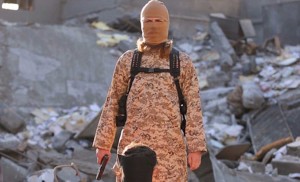 HARDAN, Iraq (AP) — Surrounded by smoke and flames, the sound of gunshots echoing around him, the young man crouched in the creek for hours, listening to the men in his family die.
HARDAN, Iraq (AP) — Surrounded by smoke and flames, the sound of gunshots echoing around him, the young man crouched in the creek for hours, listening to the men in his family die.
On the other side of the mountain, another survivor peered through binoculars as the handcuffed men of neighboring villages were shot and then buried by a waiting bulldozer. For six days he watched as the extremists filled one grave after another with his friends and relatives.
Between them, the two scenes of horror on Sinjar mountain contain six burial sites and the bodies of more than 100 people, just a small fraction of the mass graves Islamic State extremists have scattered across Iraq and Syria.
In exclusive interviews, photos and research, The Associated Press has documented and mapped 72 of the mass graves, the most comprehensive survey so far, with many more expected to be uncovered as the Islamic State group’s territory shrinks. In Syria, AP has obtained locations for 17 mass graves, including one with the bodies of hundreds of members of a single tribe all but exterminated when IS extremists took over their region. For at least 16 of the Iraqi graves, most in territory too dangerous to excavate, officials do not even guess the number of dead. In others, the estimates are based on memories of traumatized survivors, Islamic State propaganda and what can be gleaned from a cursory look at the earth.
Continue reading this story >>
Become a Christian News Network Supporter...


